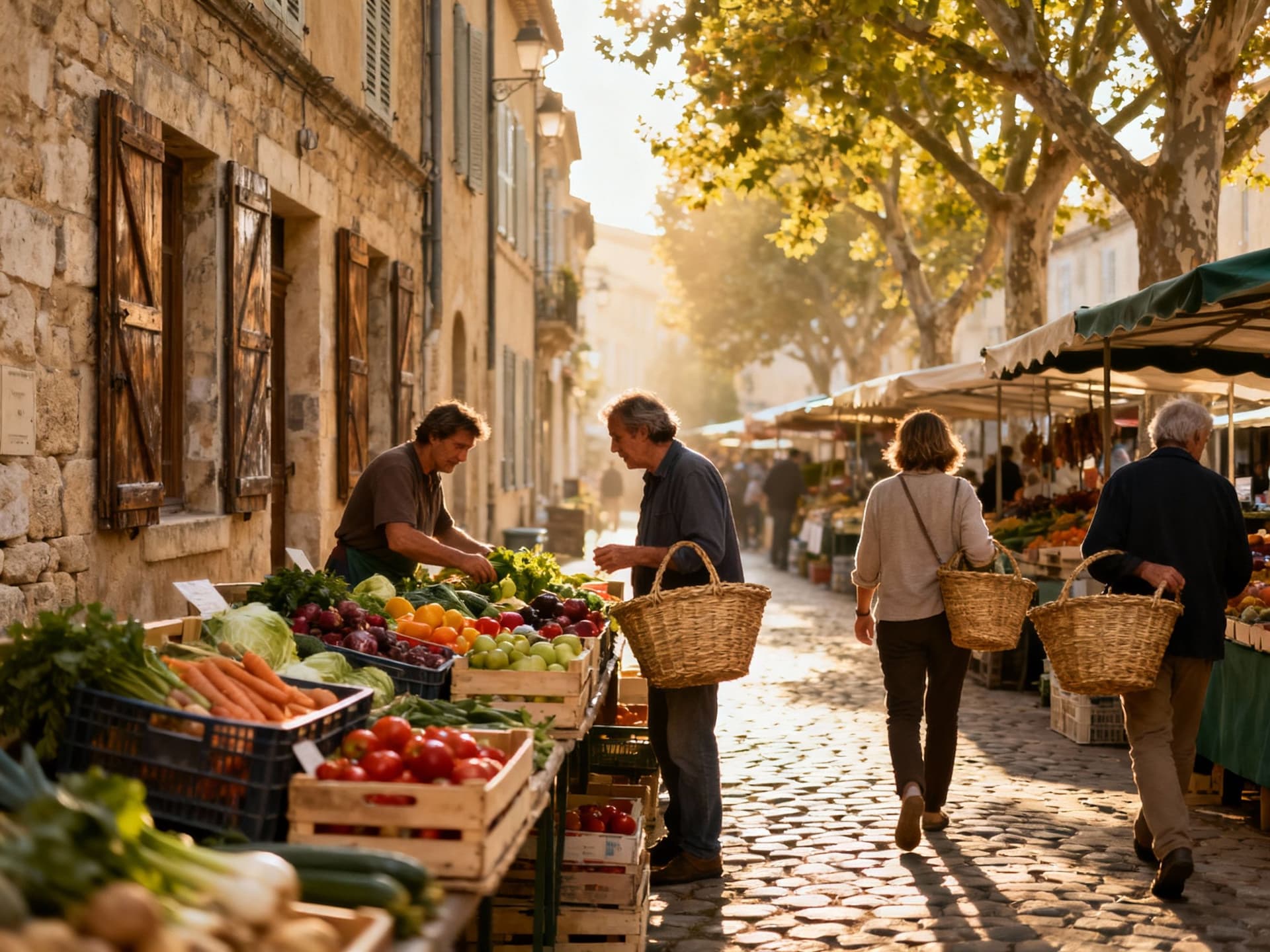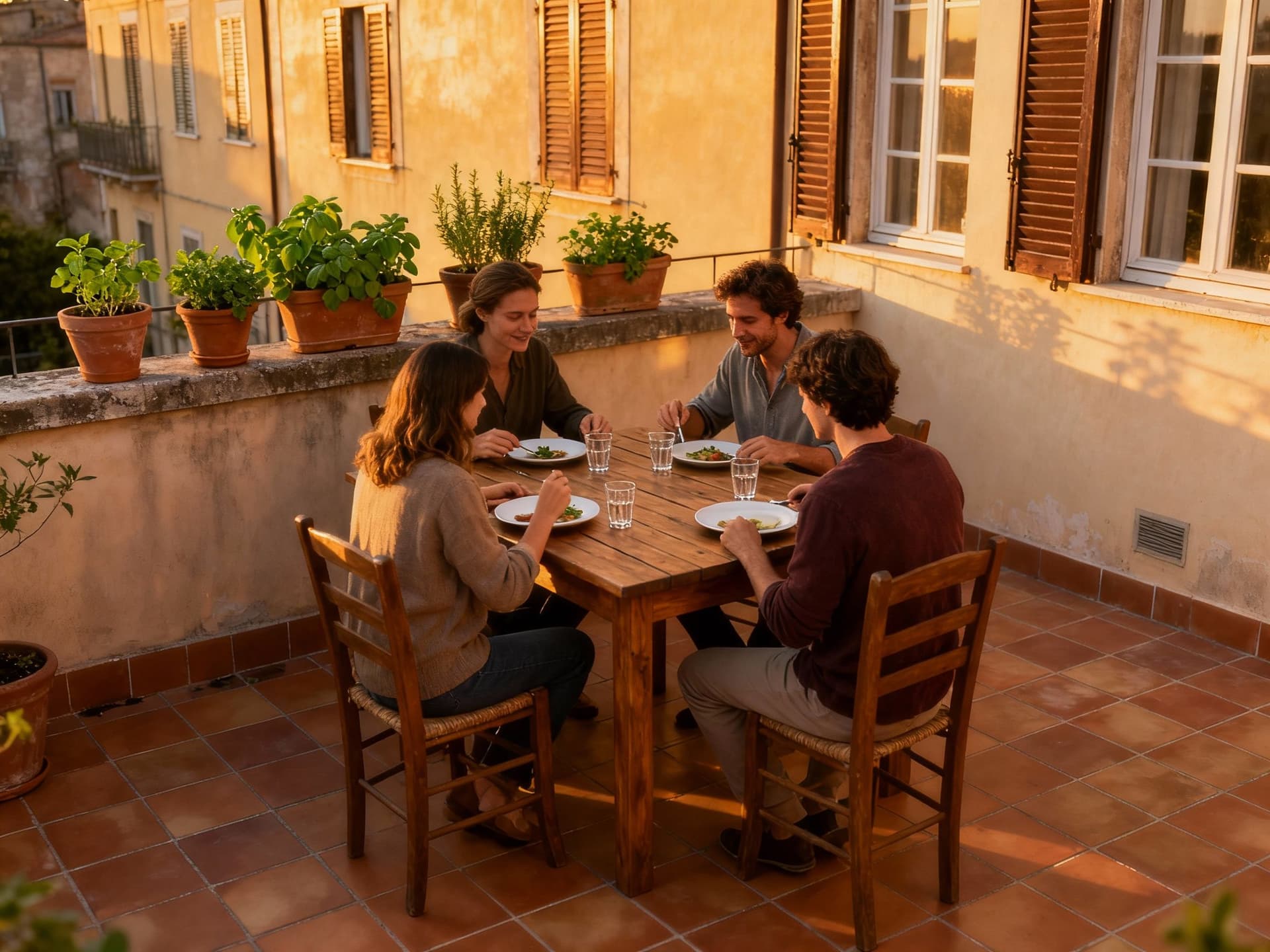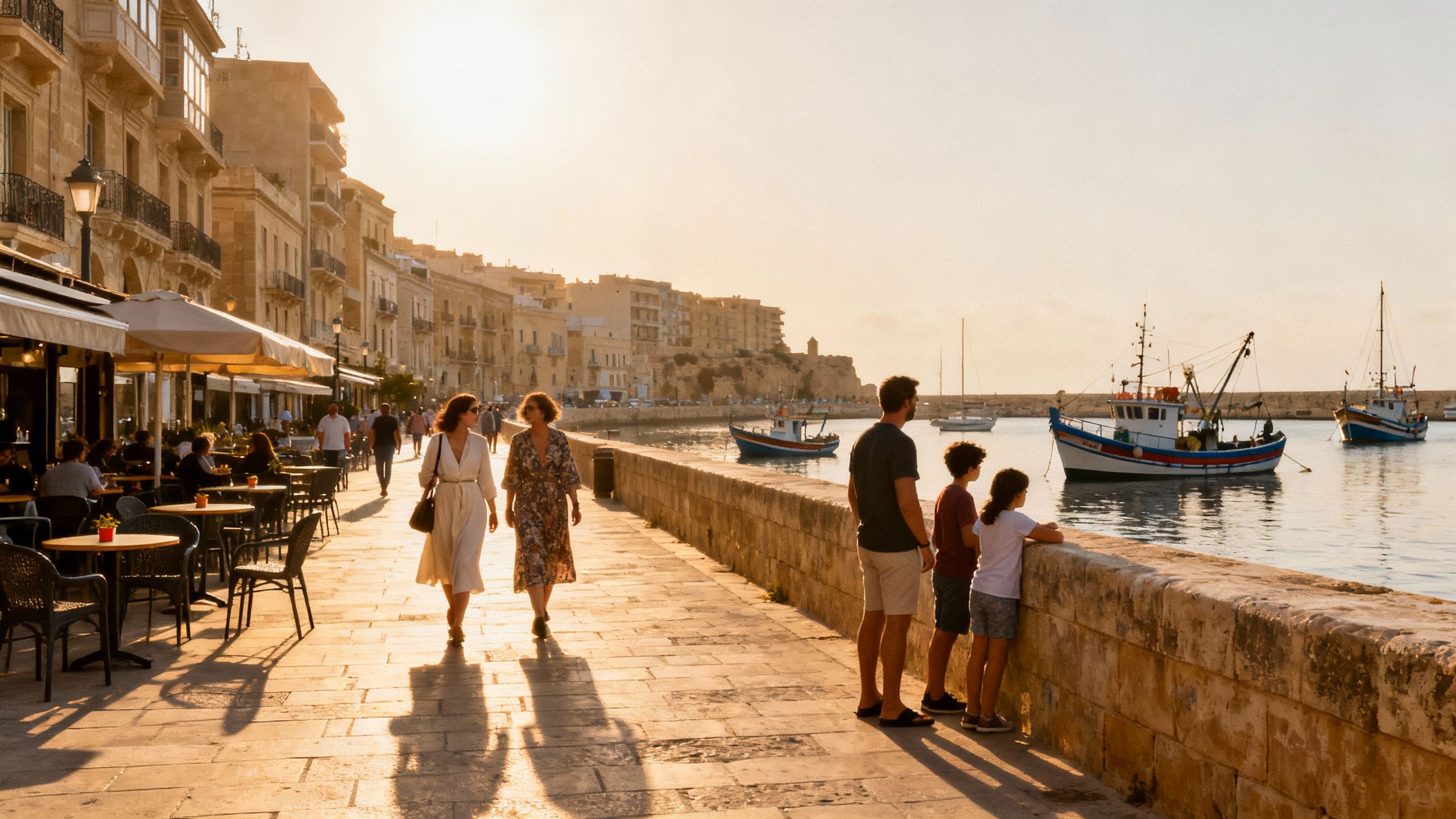French Neighbourhoods: Life Before Prices
Fall in love with France’s neighbourhood rhythms, then buy with prudence: local market stability returned in 2025 and measured visits reveal true value.
Imagine an autumn morning in Aix‑en‑Provence: steam rising from an espresso, linen shutters opening onto a courtyard of plane trees, the distant church bells marking market hour. That sensory pulse — markets, bakeries, the soft cadence of neighbourhood life — is what draws buyers to France. Yet the romance and the reality do not always coincide. This piece pairs the lived pleasures of French neighbourhoods with the facts international buyers need.
Living the France Lifestyle

French daily life is arranged around short journeys: a boulangerie within ten minutes, a weekly market where the seasonal vegetables dictate dinner, an afternoon café table where people read and greet acquaintances. Recent data show the market has resumed modest growth in 2025 after a period of stability, which matters if you want a home that is both lived in and retains value. These trends are strongest in provincial towns and selective Paris arrondissements, where lifestyle demand remains resilient.
Provençal Villages and Provincial Towns
Walk the rue des Teinturiers in Avignon or a side street off Cours Mirabeau in Aix and you notice craftsmanship — shuttered façades restored with care, wrought iron balconies, artisan shops. These towns trade on rhythm: morning markets, shutters closed after lunch for sieste, long evenings in small squares. For many internationals, this is the primary draw: an everyday life structured by place rather than by calendar.
Coastal Mornings: Côte d’Azur and Atlantic Shores
Early risers on the Riviera favour cafés by the sea and short promenades along palm‑lined avenues; the Atlantic coast offers broader beaches and a quieter summer rhythm. Each coastline supports distinct property types: Belle Époque apartments and compact villas on the Riviera, larger 19th‑century houses and modern renovations on the Atlantic coast. The choice between them is as much about daily ritual as it is about long‑term return.
- Market and lifestyle highlights
- A modest national rebound in Q1 2025; provincial second‑hand prices rose by about 1.0% quarter‑on‑quarter. (INSEE).
- Markets are local: small towns with weekly markets and strong community life often show greater price stability than overheated tourist strips.
- Seasonality matters materially — summer can mask year‑round noise; visit in ordinary weeks to feel true neighbourhood life.
Making the Move: Practical Considerations

The dream of living beside a market must be reconciled with the practicalities of acquisition. France welcomes foreign buyers, but local protocols and seasonal rhythms shape which neighbourhoods will suit you. Before making offers, understand the contract cadence, the notary’s role, and the reality of a ten‑day cooling‑off period that protects buyers after signing a compromis.
Property types and how they shape life
A vaulted stone farmhouse in Dordogne promises land and stillness; a Haussmann apartment in Paris offers proportion, light and proximity to culture; a renovated fisherman’s cottage in Brittany provides coastal rituals and a small garden. Choose according to daily priorities: slow mornings and gardened privacy, or short walks to cafés and galleries.
Working with local experts who know the rhythm
A local agent or chasseur immobilier will introduce you to neighbourhoods at the right hour, arrange measured visits, and explain contractual subtleties so you see past staging. Notaries and local lawyers confirm provenance and advise on servitudes, while a good agent translates the lifestyle — where to buy bread, which street hosts the best marché bio — into durable property choices.
- Practical steps that blend lifestyle and process
- Visit mid‑week and off‑season to experience real rhythm before signing.
- Ask your agent for local references: café proprietors, mairie urbanisme, and a neighbourhood notaire.
- Compare comparable sales over 12–24 months (not just summer) and factor in maintenance for stone, shutters, and tiled roofs.
Insider Knowledge: What Expats Wish They’d Known
The most common surprise is that local life is not always picturesque on weekdays: refuse collection days, school runs, and municipal markets structure public space. Another is that old buildings age — their charm requires stewardship. Buyers who embrace community obligations (garden maintenance associations, fête committees) find richer lives and smoother long‑term ownership.
Cultural integration and daily practice
French social life hinges on neighborhood rituals: a reliable café waiter, a marché vendor who remembers your name, a mairie that posts local notices. Invest time first: learn a few formalities of address, attend the market, and accept that small courtesies open doors. Language is useful but intent and respect go farther than fluency.
Long‑term stewardship and adaptation
Properties in historic districts will require periodic restoration: lime mortars, lead‑edged windows and traditional tiles are part of a stewardship budget. Where preservation rules apply, plan for small, continuous projects rather than deferred major works. The result is not only a preserved façade but access to a neighbourhood that keeps its character and value.
- Red flags and local realities to watch for
- Heavy short‑term rental activity on a street can change mornings and long‑term community; check council regulations and local rental patterns.
- Unclear boundaries or missing cadastre documents — insist on a notarial search before committing.
- Inflated summer pricing: compare autumn/winter sales to avoid paying peak‑season premiums.
Conclusion: If you want mornings of market bread, afternoons of quiet reading, and evenings in a small square, France rewards patience. Begin by living like a local for a week — shop the market, time your visits off‑peak, and ask your agent to show you the street at different hours. Combine that with careful review of local sale history and notarial checks and you will buy both a home and a habitué life.
Dutch former researcher who moved to Lisbon, specialising in investment strategy, heritage preservation, and cross-border portfolio stewardship.


